With the continuous development of the DePin track and the growth of its user base, Dimo is expected to become an important bridge linking vehicles, data, and humans.
Author: Xu, Deep Tide TechFlow
Editor: 0xxx
Recently, with the soaring of $Honey and $Mobile, DePIN has once again become a hotly watched track. At the end of 2022, Messari proposed the term "DePin," which means "decentralized network hardware infrastructure," consolidating dispersed physical machine network resources through token incentives.
In 2023, the DePin track performed well. According to Coinmarketcap data, the total market value of the DePin track has reached nearly $19.4 billion, with a significant increase in token value. Apart from $Honey and $Mobile in the Solana ecosystem, what other DePin projects are worth paying attention to?
This article will introduce Dimo, a DePin application focused on the management and application of vehicle data, allowing users to earn money by connecting hardware devices to their cars and sharing data.
Project Introduction
Dimo is a car IoT platform built on Polygon, enabling drivers to collect and share their vehicle data, including mileage, driving speed, location tracking, tire pressure, battery/engine health, and more.
By analyzing vehicle data, the Dimo platform can predict when maintenance is needed and promptly alert users. In this way, drivers can not only gain in-depth knowledge of their vehicles but also contribute data to Dimo's ecosystem, earning DIMO tokens as rewards through Drive-to-Earn.
So, you might ask, based on past experiences of being "harvested," most xxx to earn projects often turn out to be Ponzi schemes, with a brilliant but short-lived display, ending in a mess. How does DIMO's positive externality come about? This may be the special feature of the new generation of DePIN, which can seek positive externalities for the ecosystem by connecting real-world needs, thus having a real source of profit. DIMO is targeting a large market. According to data from the National Automobile Dealers Association, the total sales of all new light vehicles in 2021 exceeded $1.18 trillion, with the used car market in the United States being more than three times that size, and the car insurance market valued at around $317 billion. Cars are gradually entering the era of electric intelligence, transforming from a simple mechanical product into a technological product, and car data has become a treasure trove.
Currently, there are approximately 250 million connected cars worldwide, and the data they generate is often controlled by traditional car manufacturers. Original equipment manufacturers (OEMs) often sell various data generated by cars, such as battery health information, while Amazon, Apple, and Google are making every effort to embed their software into vehicles and attempt to obtain user data.
This has also given rise to a group of third-party car data startups, such as Otonomo and Wejo. Otonomo collects car data, standardizes and normalizes it, and then provides it to car manufacturers. In 2021, it went public through a SPAC merger.
In short, the monetization of car data already has a mature business model. McKinsey researchers predict that the overall profit from global car data monetization will reach $450 billion to $700 billion by 2030.
What DIMO aims to do is to enable users to control their car data and become the "owners" of their cars, and thus gain income from the data generated.
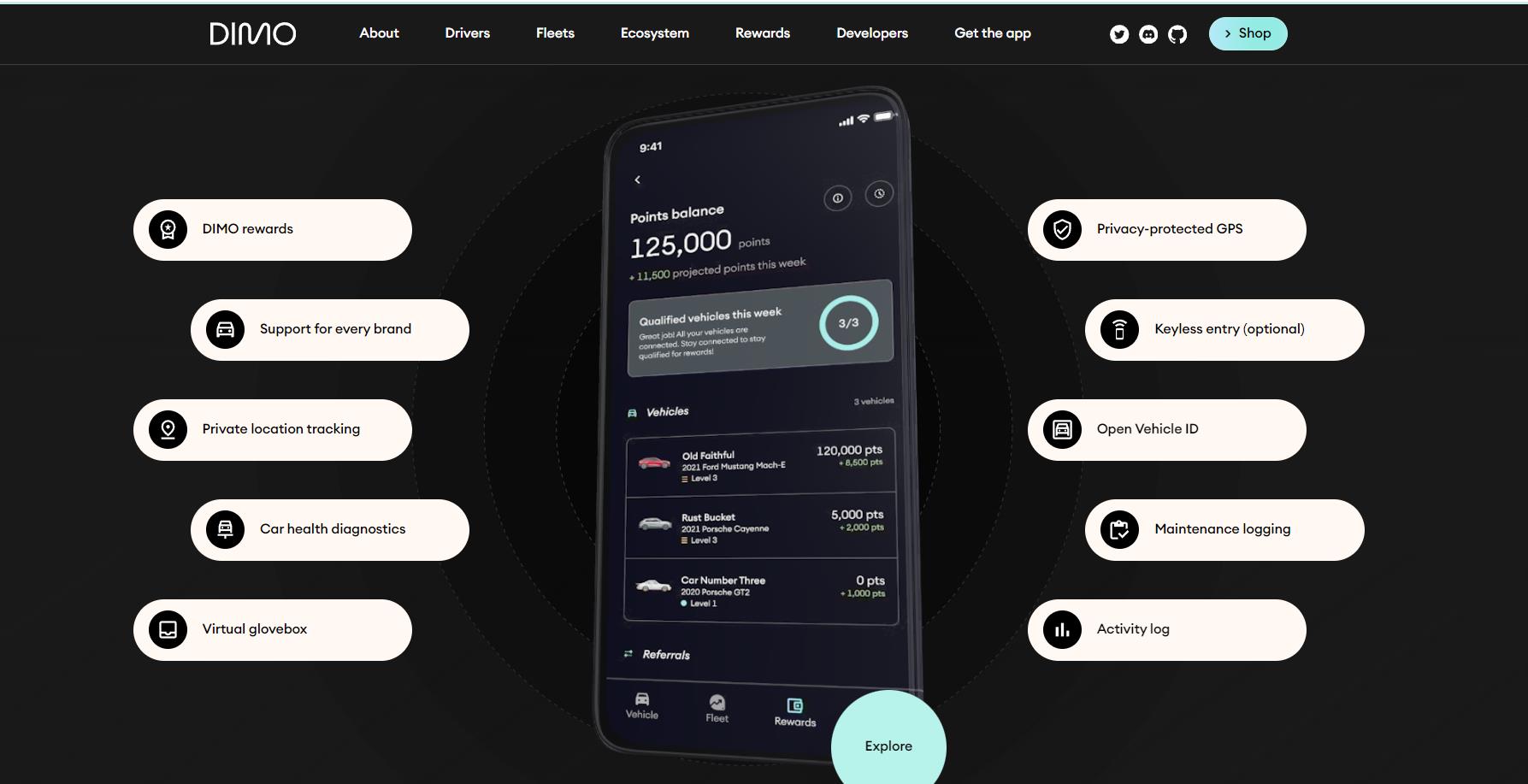
At first glance, DIMO and Hivemapper have similarities, both belonging to Drive-to-Earn. The difference lies in DIMO connecting cars with the drivers themselves, monetizing the data of car driving, depending on the effective usage time of the product and the connectivity of the device by the car owner, while Hivemapper is a blockchain-based map network that incentivizes people to extensively collect map data by driving cars.
Project Website: https://dimo.zone/app?
Official Twitter: https://twitter.com/DIMO_Network
Project Operation
1. Connect Dimo AutoPi to the User's Car
In addition to Tesla car users being able to download the Dimo app from the App Store to connect with Dimo, users of other car brands need to purchase a hardware device called AutoPi (currently priced at $299) to connect with Dimo. Currently, this device can be used for all cars produced in 2008 and later.
Once the AutoPi device is connected to the user's car, it can monitor the vehicle's performance and health data in real time, including tire pressure, mileage, and more.
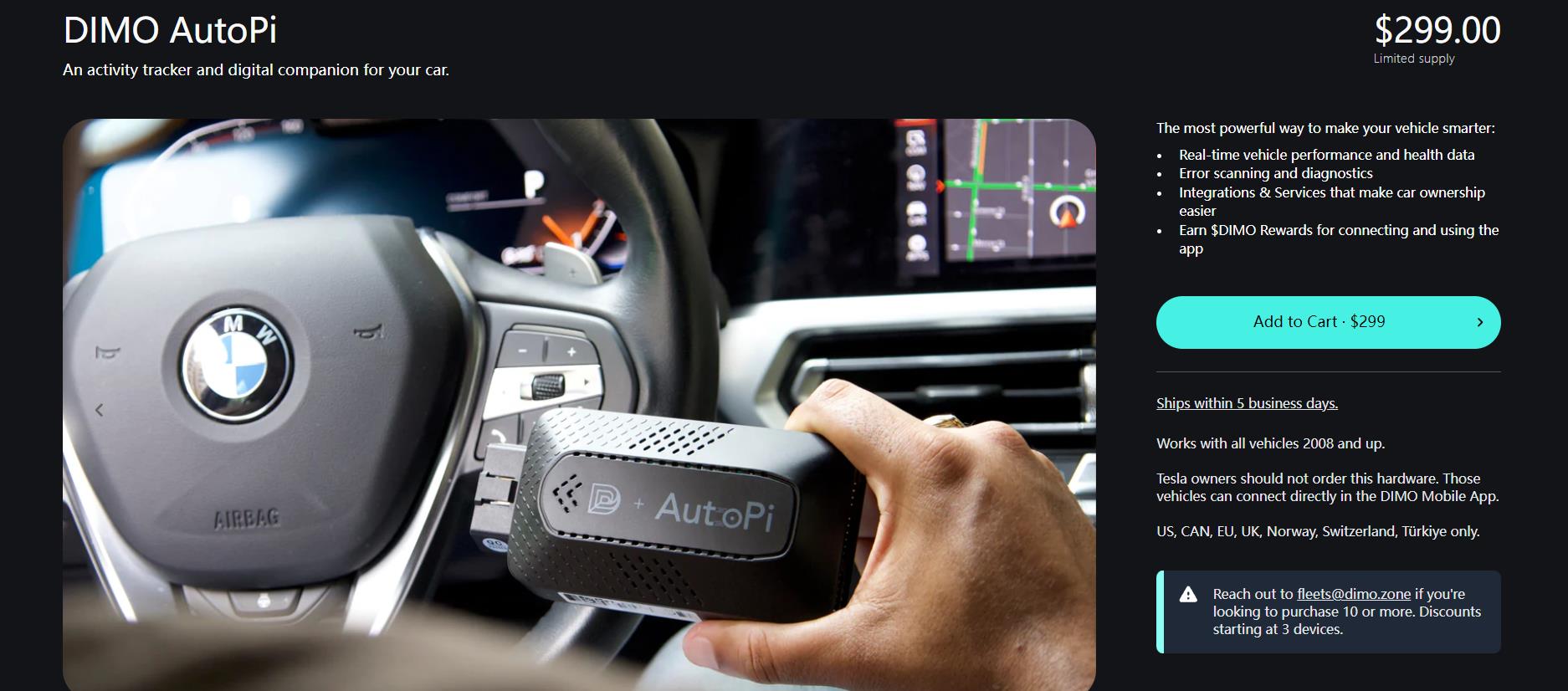
2. Earn DIMO Token Rewards
Users can earn DIMO tokens in two ways:
Baseline Issuance Reward: This is rewarded based on the user's (i.e., driver's) connection time and method. This method aims to build a network by incentivizing drivers to connect their vehicles and transmit data, thereby rewarding long-term support for DIMO users and encouraging continuous data connection.
Market Issuance Reward: When users transact with authorized DIMO applications, they receive additional DIMO tokens. As long as the reward is issued in the form of DIMO, the quantity and terms of the reward are specified by the application developer.
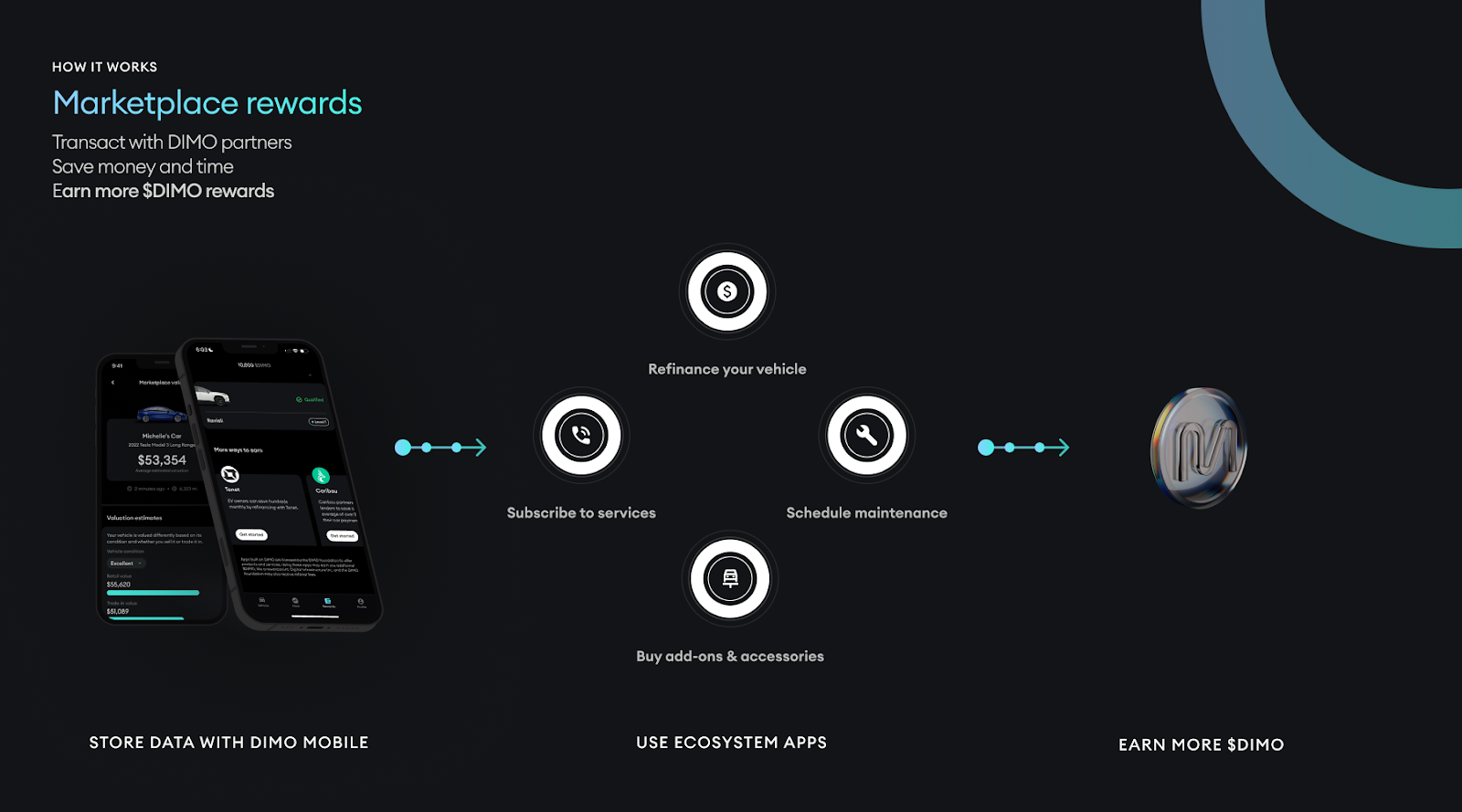
Project Team and Financing
Team Members
- Andy Chatham, Co-founder of Dimo, and CEO of Digital Infrastructure

- Alex Rawitz, Co-founder of DIMO, and COO and Co-founder of Digital Infrastructure

- Rob Solomon, Co-founder of DIMO, former CFO of ConsenSys Mesh.

Financing Situation
Dimo received a $9 million investment on February 17, 2022, with the round and valuation undisclosed. Investors include CoinFund, Variant Fund, Slow Ventures, and more than ten other institutions and individuals.
Token Economics ($DIMO)
Introduction to $DIMO
$DIMO is the native token of the Dimo network, issued to users and contributors. Users can earn $DIMO by connecting their cars to the Dimo network. $DIMO primarily serves the following four purposes:
Transaction Needs: Token holders can buy and sell vehicle data with $DIMO tokens, and can also purchase the Dimo AutoPi connection device.
Governance Rights: $DIMO token holders can vote on the operation of the protocol, including but not limited to software code upgrades, protocols and standards; how fees are generated, how rewards are distributed, and more.
Incentive Role: $DIMO tokens can be used to incentivize ecosystem participants. Business participants, such as car owners, data providers, application developers, etc., need to stake or spend $DIMO tokens to participate in the ecosystem.
Community Membership: Token holders can gain access to special application features and events.
Token Allocation
The total token supply is 1 billion, with the detailed allocation mechanism as follows:
Baseline issuance accounts for 38%, with 380 million $DIMO tokens to be distributed over 40 years. In the first year, 1,105,000 $DIMO will be issued to users weekly, with the issuance decreasing by 15% each year.
Dimo Treasury accounts for 22%, and teams and individuals contributing to the network may receive $DIMO in the form of bounties or grants.
Team allocation accounts for 22%, with the token distribution subject to a two-year lockup, followed by linear unlocking monthly until fully unlocked after three years.
Investor allocation accounts for 8%, with the token distribution subject to a two-year lockup, followed by linear unlocking monthly until fully unlocked after three years.
Airdrop allocation accounts for 7%.
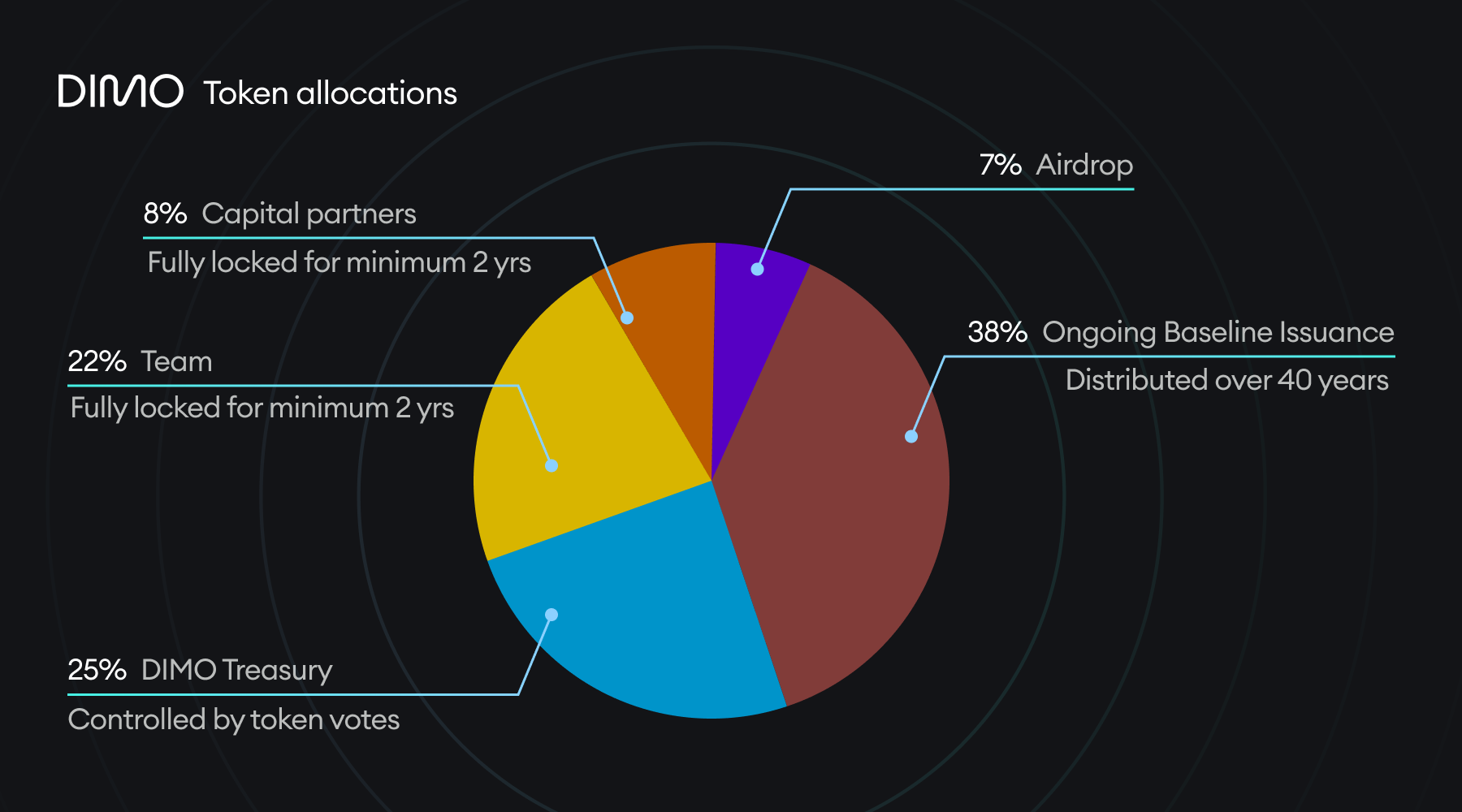
Dimo Development Status
Web2 Partnerships
As of the time of writing, Dimo has partnered with 9 Web2 companies, including dealerships, ecosystem partners, and more.
These businesses (such as gas stations, repair shops, and car parts stores) are part of the Dimo network, and users can use DIMO tokens to purchase services from these businesses.
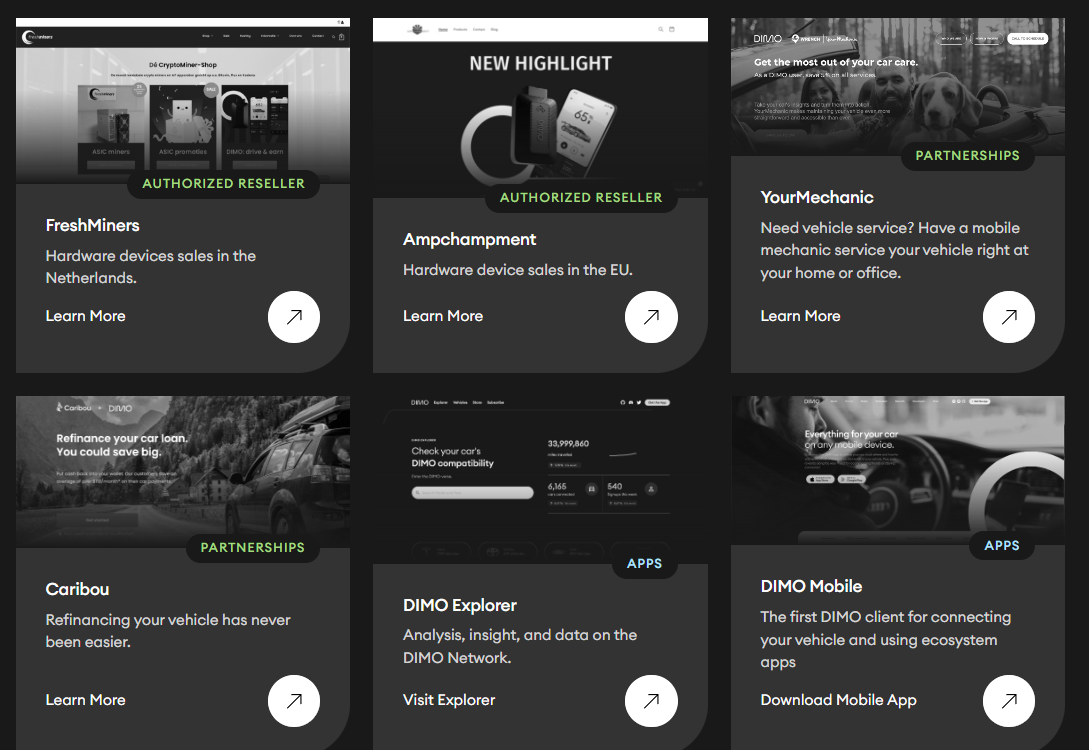
Web3 Partnerships
Currently, Dimo has partnered with 8 Web3 projects, including Polygon, Chainlink, and others.
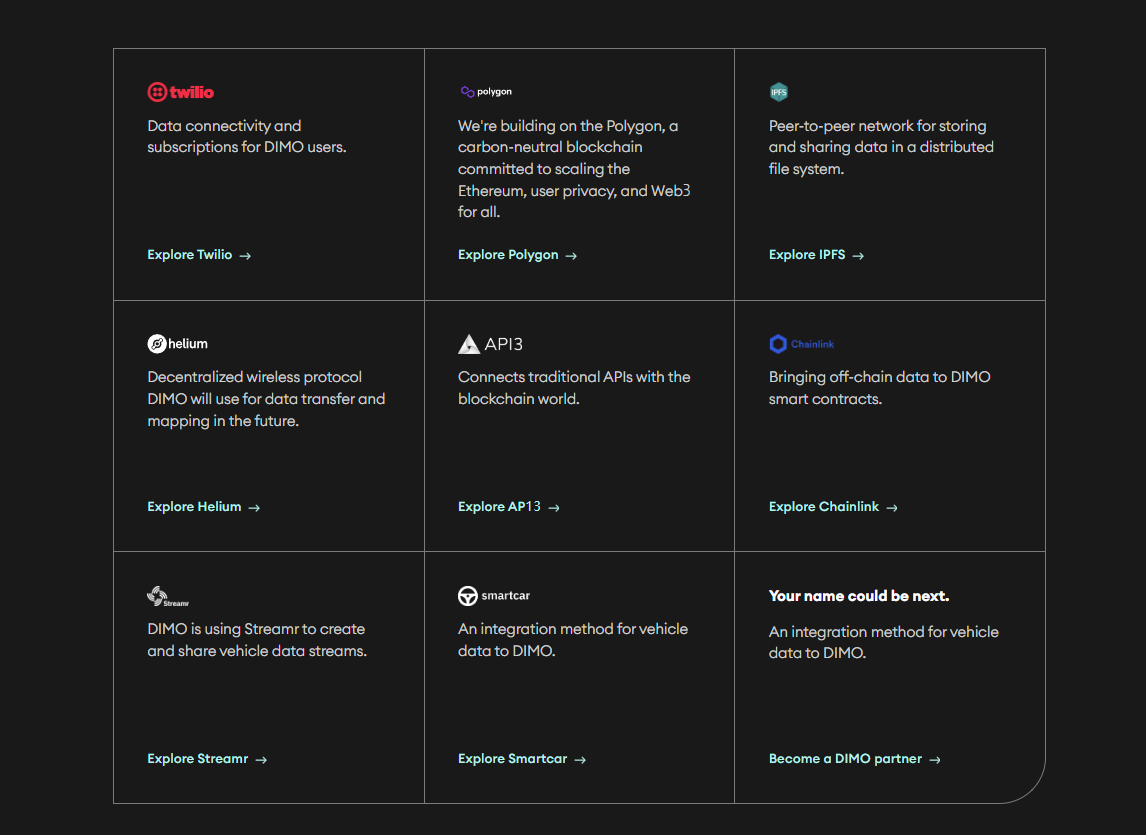
Latest Project Updates
On December 13, 2022, the Dimo mainnet was launched. As of December 13, 2023, the one-year anniversary of the Dimo mainnet launch, the project has achieved significant results:
- Nearly 28,000 cars have been connected to the Dimo network (only 1,400 at the launch of the mainnet), with users accumulating over 153 million kilometers of driving distance.
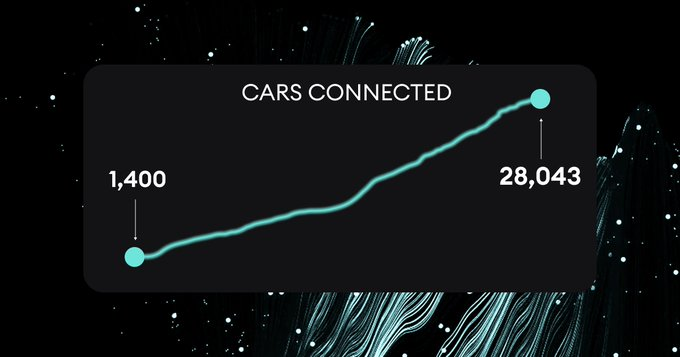
- Dimo users are distributed in over 81 countries/regions, with the majority in the United States and the United Kingdom.
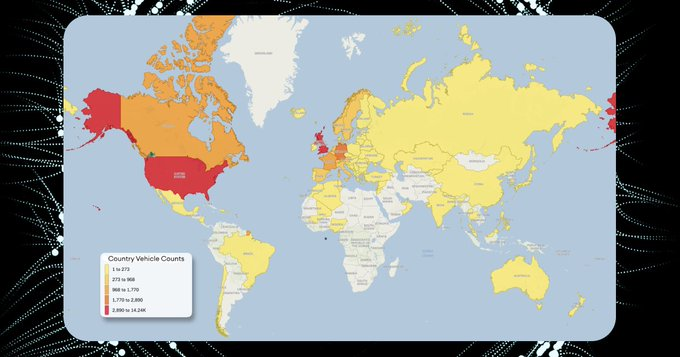
Over 57 million $DIMO tokens have been distributed to users, valued at approximately $13 million.
The connected cars on the Dimo network vary in value, with the cheapest car worth only $2,300 and the most expensive reaching $410,000. If the estimated value of each car on the Dimo network is summed, the total will exceed $750 million!
A total of 71 car brands have been connected to Dimo, with the top three being Tesla, Ford, and BMW.
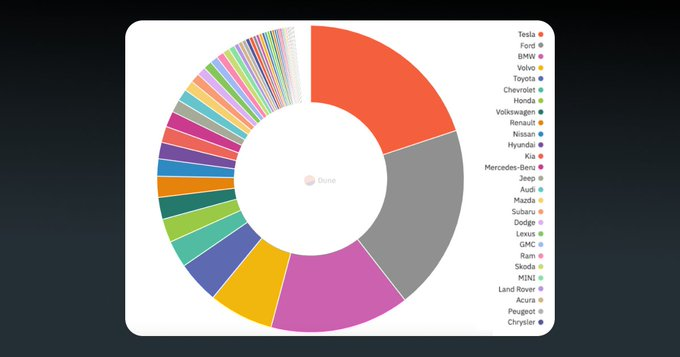
Conclusion
It has always been thought that Web3 is pursuing "mass adoption," that is, real large-scale application, with some hoping for games or social media, while DePIN projects like DIMO have opened up another path, connecting the encrypted world with the physical world through hardware.
At the intersection of Web3 and cars, Dimo gives drivers control over their vehicle data, not only enhancing personal privacy and data security but also opening up new avenues for sharing and utilizing car data.
With the continuous development of the DePin track and the growth of its user base, Dimo is expected to become an important bridge linking vehicles, data, and humans. This innovation not only drives technological progress but, more importantly, it promotes the transformation of social value, allowing everyone to benefit from their own data and truly achieve data democratization.
免责声明:本文章仅代表作者个人观点,不代表本平台的立场和观点。本文章仅供信息分享,不构成对任何人的任何投资建议。用户与作者之间的任何争议,与本平台无关。如网页中刊载的文章或图片涉及侵权,请提供相关的权利证明和身份证明发送邮件到support@aicoin.com,本平台相关工作人员将会进行核查。




